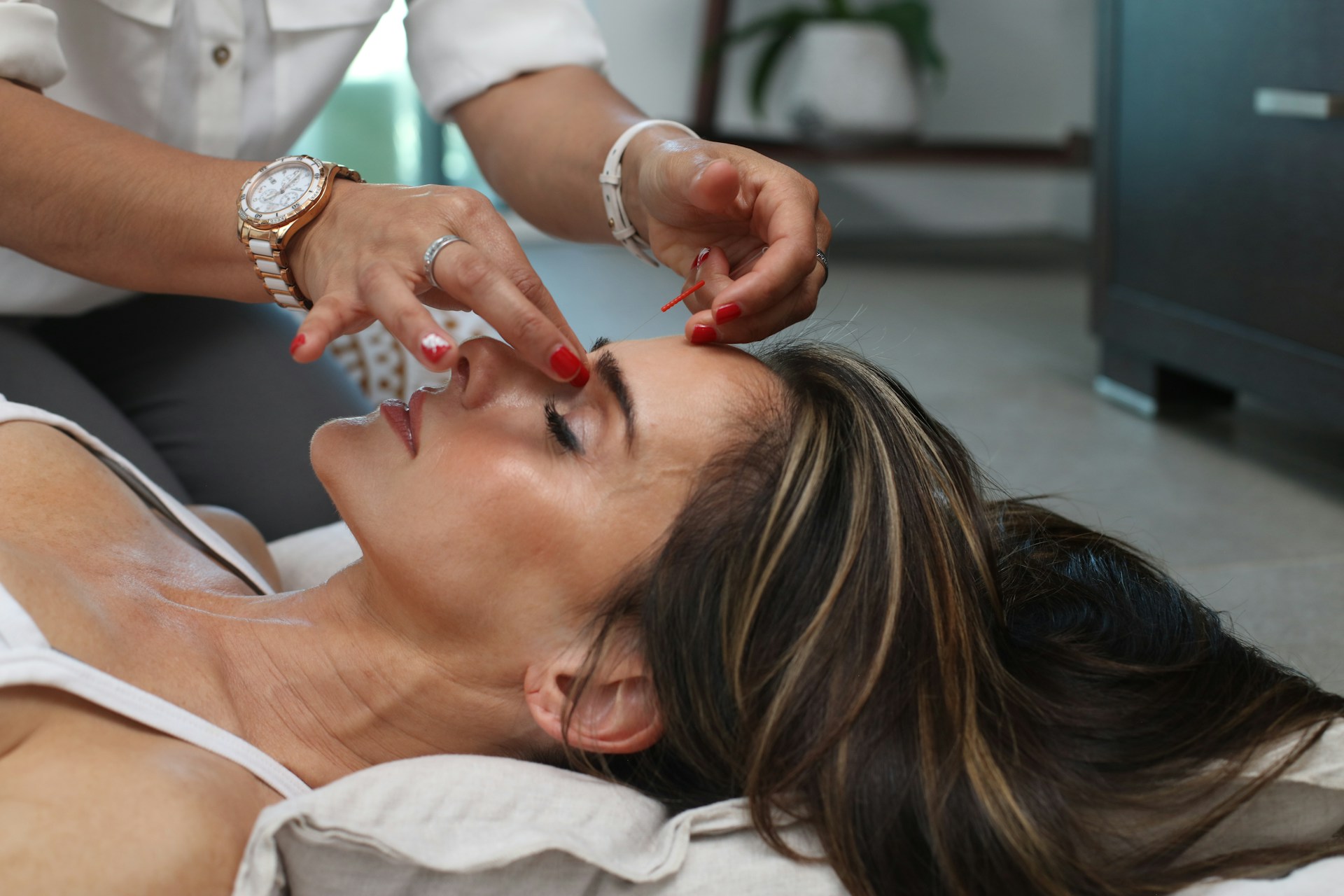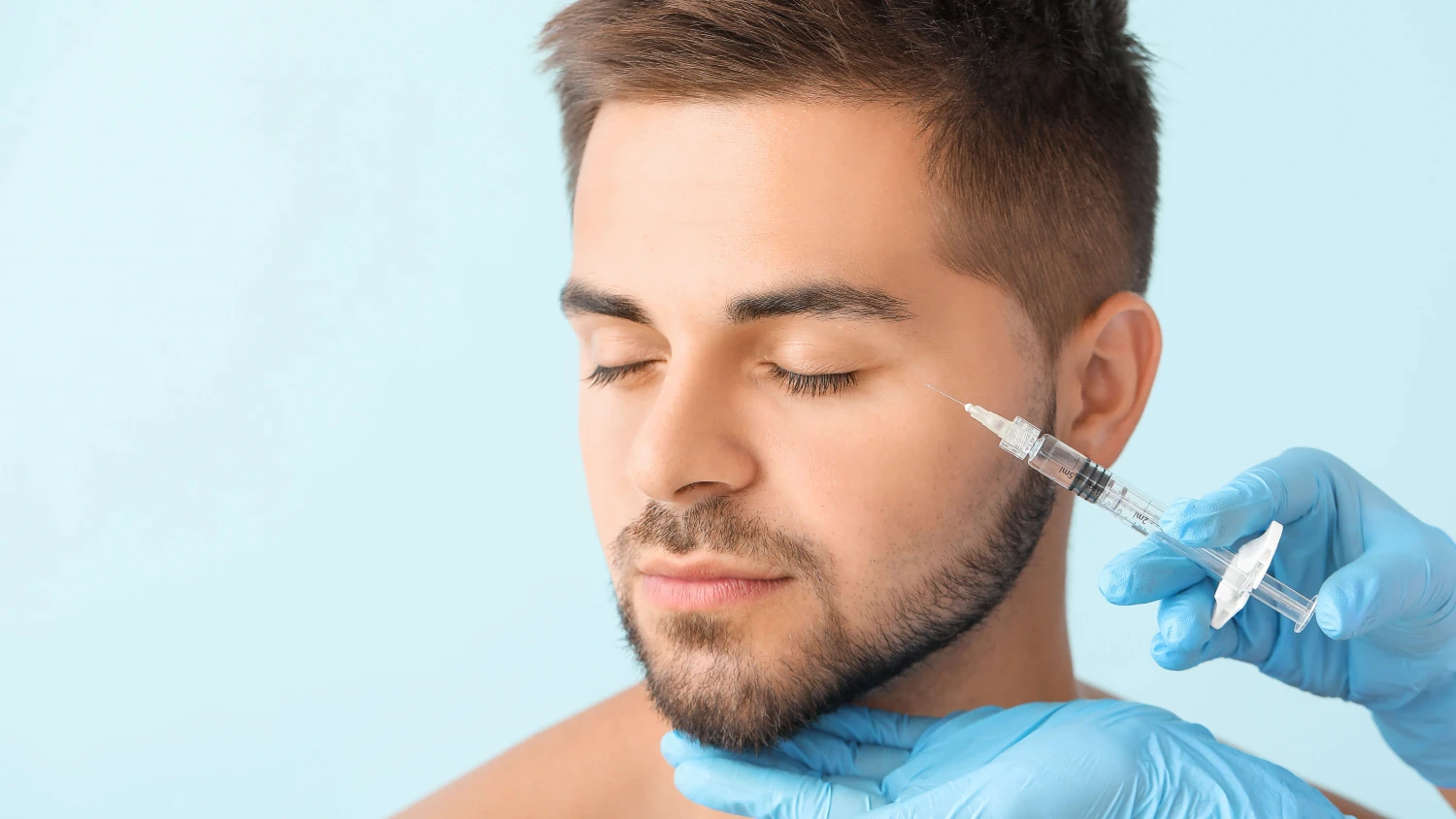Read on for answers to the most common BOTOX questions. For further information, talk to your plastic surgeon or injections specialist by scheduling a complimentary consultation at Savannah Plastic Surgery and The Savvy Skin Medical Aesthetics & Laser Center.
- What Is BOTOX?
BOTOX is derived from botulinum toxin A. This toxin is produced by the bacterial species Clostridium botulinum, which causes botulism food poisoning. The main effect of botulinum toxin is that it paralyzes nerves and the muscles that they control.
In BOTOX and other botulinum-derived treatments like Dysport®, the amounts used are minute. And the formulation is designed so that when it’s injected, it tends to stay in the same area. This makes BOTOX safe for injecting beneath the skin. When BOTOX is administered correctly by a trained professional, it’s extremely rare to experience any serious side effects.

- How Does BOTOX Work?
When BOTOX is injected into the skin, it’s taken up by cells in the local area. In nerve cells, BOTOX blocks the nerve signals that cause muscles to contract. In facial treatment areas this has the effect of smoothing out fine lines and wrinkles in the skin overlying the frozen muscles. This happens because muscle contractions cause certain kinds of wrinkles to form, in particular:
- Forehead lines
- Lines between the eyes
- Crow’s feet wrinkles
When the facial muscles can’t contract, the overlying skin appears smoother and looks younger.
- How Many Units of BOTOX Do I Need?
BOTOX isn’t a “cookie-cutter” treatment where every individual gets the exact same dosage, but the amount of units you need depends on three things:
- The number of treatment areas you want to include
- The depth of the facial wrinkles to be treated
- The intensity of the effect you want
It’s not possible to say for sure how much BOTOX you’ll need until your medical provider examines your face. But there are some baseline numbers that can help you estimate your needs. You may need more or less BOTOX, depending on your skin texture and wrinkle depth, and other variables.
- Neck: 25-50 units
- Chin: 2-6 units
- Corners of the mouth: 3-6 units
- Jaw area: 15-50 units per side
- Lines around the nose: 5-10 units
- Frown lines (glabellar): 10-25 units
- Eyebrows: 1-5 units
- Forehead lines:10 to 20 units
- Crow’s feet: 10 to 12 units per eye
These are estimates only. See your BOTOX practitioner for a specific answer to, “How many units of BOTOX do I need?”
- What Results Can I Expect with BOTOX?
The main effect of BOTOX treatment is that wrinkles in the treatment areas smooth out. Deep lines are reduced in appearance, while shallow lines are often erased altogether. Your skin is left looking smoother, younger, and refreshed.
It’s important to know that BOTOX is most effective at easing dynamic wrinkles—the wrinkles that appear when you make facial expressions. Dynamic wrinkles include forehead lines and the glabellar lines that form between the eyebrows, as well as BOTOX for crow’s feet wrinkles. These lines form over time as a result of facial muscle movements, which is why BOTOX treats them so effectively. If you have mainly dynamic wrinkles, you can expect good results with BOTOX treatment.
BOTOX is less effective at treating static wrinkles. These wrinkles are not caused by muscle movements and are always apparent, even when your face is relaxed. These lines develop most often due to skin volume loss that occurs as a result of aging. If you have deep static wrinkles, BOTOX treatment may be able to soften them, but it won’t completely remove them. For most people, dermal fillers like Juvéderm® and Restylane® are a more effective treatment option for static wrinkles.
- How Long Does BOTOX Last?
For most people, the full effects of BOTOX last three to four months. Around this time, the effects will start to wear off. However, results can vary widely from person to person. For some, BOTOX lasts a couple months after treatment, while for others it lasts up to six months.
Many people find that with repeat BOTOX treatments, their results last slightly longer. This happens because when treatments are repeated over time, BOTOX weakens the muscles that promote the formation of wrinkles. Not everyone will experience this effect. It’s more likely to happen for people who schedule regular BOTOX treatments every few months.
- What Are BOTOX Treatment Areas?
BOTOX is for three main treatment areas:
- Forehead lines (also called frown lines): BOTOX can reduce the appearance of prominent forehead wrinkles. If your wrinkles aren’t too deep, forehead BOTOX may be able to remove them entirely.
- Glabellar lines: These are the lines that form between the eyebrows, and they can be reduced with BOTOX treatment. If the lines aren’t too deep, BOTOX may be able to completely erase them.
- Crow’s feet lines and wrinkles: These lines at the corners of the eyes are typically caused by squinting and other similar facial movements. They can be reduced with BOTOX treatments.
- Am I a Good Candidate for BOTOX?
In general, you’re a suitable candidate for BOTOX treatment if you meet the following criteria:
- Are at least 18 years old
- Are in good physical health
- Have no active skin infections or skin conditions, such as psoriasis or eczema
- Are not pregnant or nursing
- Have realistic expectations of what BOTOX can achieve
- How Long Does It Take to Get BOTOX?
It depends on how many treatment areas you want to include in the session. A typical BOTOX session lasts 30 minutes or less.
- What Happens in a BOTOX Treatment Session?
When you get BOTOX for the first time, you’ll have an initial consultation to talk about what you want from treatment and what BOTOX can do for you. Once the consultation is over, you can then go ahead and have the treatment. Any subsequent BOTOX treatments you have will be faster because you’ll be able to skip the consultation.
During the treatment, your practitioner will first numb the treatment areas with an injection of a local anesthetic such as Lidocaine. Once this has taken effect, they’ll inject the BOTOX. This is very quick, taking only a few minutes per treatment area. Once the injections are finished, you’re done. Since the anesthetic is local, there’s no need to wait; you can leave right away and get back to daily life!
- Do BOTOX Injections Hurt?
The needles used to inject BOTOX are very thin, so they don’t cause much discomfort. Most practitioners will numb the treatment areas beforehand, so you won’t feel anything at all during a BOTOX treatment.
- Do I Need to Do Any Special Preparation Before Having BOTOX?
For most people, there’s nothing special you need to do before having BOTOX. However, you should let your BOTOX practitioner know about any medications you’re taking or any health conditions you’re affected by. In particular, make sure you tell them about any sleep aids, allergy medications, or muscle relaxants you use.
If you take a blood thinning medication, you may be advised to stop taking it for a few days before having BOTOX.
- What Is BOTOX Recovery Like?
It’s just like living your normal life! BOTOX has no downtime, and there’s no need to take time off work or most other normal activities. In fact, most people can have a BOTOX treatment session during a lunch break and go right back to work afterwards.

- What Should I Do After BOTOX Treatment? What Should I Avoid?
There are a few things you should avoid doing after getting BOTOX. Mostly, this means avoiding activities that might spread BOTOX from the treatment areas to other parts of the face. The most crucial time for this is the first 24 hours after treatment because this is the time when BOTOX is absorbed by cells in the treatment areas.
Things to avoid include:
- Touching your face: In particular, avoid rubbing the treatment areas.
- Exercise: Avoid exercise for the first 24 hours. Exercise dilates blood vessels and increases circulation, which can make BOTOX spread from treatment areas to other parts of the face.
- Sun exposure: It’s good practice to limit sun exposure because of its effects on skin in general. It’s even more important after BOTOX treatment because it can have the same effect as exercise. Avoid sun exposure for at least the first 24 hours.
- How Long Does BOTOX Take to Work?
When you get BOTOX, it takes a couple days for things to start happening. It’s not like dermal fillers, where you see the initial results right away. This is because for BOTOX to work, nerve cells in the treatment area have to ingest the toxin. After that, it takes some additional time for the associated muscles to fully relax.
For most people, it takes three to four days to start seeing the desired results of BOTOX.
- How Long Does It Take to See the Maximum Results of BOTOX Treatment?
While initial noticeable results can be seen after just 3 to 4 days, it can take 7 to 10 days to see your final results. If you’re having BOTOX because you want to look your best for a special event, take this into account! It’s best to schedule BOTOX at least a couple weeks in advance of any special event you want to attend.
- What Are the Side Effects of BOTOX?
Clinical trials for BOTOX have noted that some people experience non-harmful side effects after having BOTOX injections. These side effects are temporary, usually lasting only a few hours or days.
The most common side effects of BOTOX are:
- Feelings of skin tightening or heaviness in treatment areas
- Swelling in treatment areas
- Discomfort or pain at treatment sites
- Tiredness
- Headache
- Neck pain
- Dry mouth or eyes
- Drooping or sagging in the treatment area; for instance, eyelid drooping or brow drooping after injections in the eye or brow area
Make sure to report any symptoms you experience to your BOTOX injector. They may want to adjust your dosage or injection sites for subsequent treatments.
- Does BOTOX Have any Serious Side Effects?
BOTOX does have the potential to cause more serious side effects, but they are very uncommon. In rare cases, BOTOX may cause symptoms such as:
- Problems with swallowing or talking
- Breathing problems
- Vision problems, such as double vision or blurred vision
- Muscle weakness
- Bladder incontinence
- Allergy symptoms, such as hives, itching, or swelling at injection sites; or dizziness, wheezing, or difficulty breathing
Because BOTOX effects wear off with time, these symptoms are only experienced temporarily. However, some symptoms can have dangerous consequences if they’re ignored. Therefore, it’s important to call your doctor immediately if you experience any of the above symptoms after BOTOX treatment.
If you have allergy symptoms, seek emergency medical care.
- Can BOTOX Trigger My Existing Allergy?
If you are allergic to cow’s milk protein, you should not have BOTOX treatments because the BOTOX formula contains a very similar protein (bovine protein) that can trigger allergy symptoms. Talk to your BOTOX practitioner about BOTOX alternatives like Xeomin, which doesn’t contain those proteins.
If you have a different kind of allergy—such as seasonal allergies, for instance—it’s fine to have BOTOX. Having an unrelated allergy doesn’t increase the risk that you might have an allergic reaction to BOTOX.
Always tells your injections specialist about any allergies you have.
- I Have Sensitive Skin. Can I Still Get BOTOX?
Yes, you can have BOTOX injections, even if you have sensitive skin. Make sure to inform your BOTOX injector if you have a history of skin sensitivity. They may recommend that you have an allergy test before going forward with BOTOX injections.
- Can I Use BOTOX During Pregnancy?
Doctors recommend that anyone who is pregnant or breastfeeding avoid using BOTOX.
- Will BOTOX Make My Face Look Frozen or Unnatural?
No! When people have BOTOX and get that unnatural “frozen face” look, it’s for one of two reasons. Either they’ve had too much BOTOX or they’ve worked with an inexperienced BOTOX practitioner.
When you work with an experienced BOTOX practitioner and have an appropriate amount of BOTOX, you won’t look frozen or unnatural. You’ll look like you—but with fewer wrinkles!
- Does BOTOX Affect Sensation in Treatment Areas?
No. BOTOX only affects the kinds of nerves that control muscle movement. The nerves that cause sensation are a different kind and are not affected by BOTOX.
- How Much Does BOTOX Cost?
At the time of writing, the cost of BOTOX at Savannah Plastic Surgery is $12 per unit. BOTOX pricing can vary.

- How Old Should I Be to Get BOTOX?
BOTOX is FDA approved for cosmetic purposes for people who are at least 18 years of age.
In general, anyone in their mid-20s and older can benefit from BOTOX treatments. This is because you don’t have to have deep facial lines and wrinkles in order to see the benefits of BOTOX. People in their late 20s and early 30s can benefit even before facial wrinkles start showing up.
Having BOTOX treatments at this life stage is a preventative measure that can actually delay the onset of lines and wrinkles. This preventative effect occurs because BOTOX prevents the muscle contractions that, over time, cause lines and wrinkles to form. So while the most dramatic results of BOTOX are seen in people in their 40s and older, people in their 20s and 30s can benefit from BOTOX too.
- Can I Have BOTOX andDermal Fillers?
Yes, you can have both BOTOX and dermal fillers—even in the same treatment area. In fact, these treatments complement one another because they treat different aspects of aging and provide different benefits.
- Does BOTOX Have Any Other Uses?
Yes! BOTOX has medical uses as well as cosmetic ones. For instance, BOTOX can be used to reduce excessive sweating and is also an effective treatment for migraines. Because these are both medical treatments, they are covered by many insurance providers.
BOTOX for Sweating
BOTOX can be used to treat hyperhidrosis, a condition that causes excessive sweating under your arms, on your scalp, or on your hands and feet. For this treatment, BOTOX units are injected into areas where excessive sweating is a problem. The neurotoxin works by paralyzing the glands that cause sweating, reducing or preventing sweating in these areas. BOTOX can reduce underarm sweating by up to 88%, and the treatments lasts 6 to 9 months.
BOTOX for Migraines
If you suffer from chronic migraine headaches and other treatments have been ineffective, BOTOX could be life-changing. For migraine treatment, BOTOX is injected into areas of the head, scalp, and shoulders. It paralyzes nerves in these areas to reduce or eliminate pain that would otherwise cause migraines. Each treatment session involves 10 or more injections, and sessions need to be repeated approximately every 10 to 12 weeks for best results.
- What Is Preventative BOTOX?
BOTOX works to reduce the appearance of existing lines and wrinkles, but it can also prevent or delay lines and wrinkles appearing. Using BOTOX for this purpose is called preventative BOTOX. This is effective because BOTOX paralyzes the muscles that contribute to the formation of facial lines and wrinkles. By relaxing those muscles, the formation of lines and wrinkles is delayed.
- Are There Alternatives to BOTOX?
Non-surgical alternatives include other botulinum-based injectables such as Dysport, as well as dermal fillers such as Juvéderm. In contrast to BOTOX and Dysport, facial fillers work by restoring volume to the skin, which diminishes fine lines and wrinkles. And while Dysport and BOTOX target dynamic lines (lines related to movement), Juvéderm and Restalyn target static lines (lines not caused by movement).
Where Can I Get BOTOX In and Around Savannah, GA?
Savannah Plastic Surgery and The Savvy Skin Medical Aesthetics & Laser Center serve patients in Savannah as well as surrounding areas of Chatham County. We have multiple locations, including our main surgery in Savannah and satellite offices in Hinesville and Brunswick, GA, as well as in Bluffton, SC.
Schedule a BOTOX appointment or a complimentary consultation today to see whether BOTOX Cosmetic is the right skin rejuvenation choice for you!

